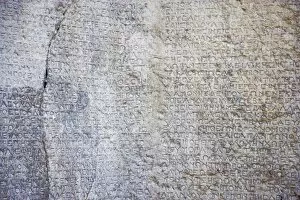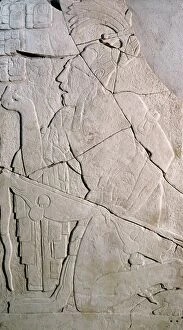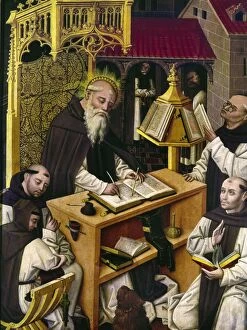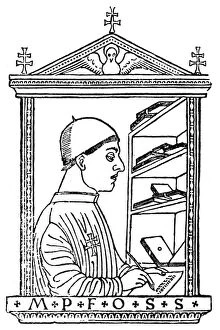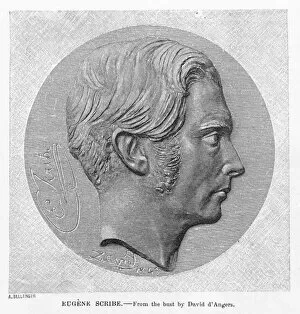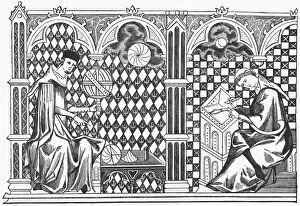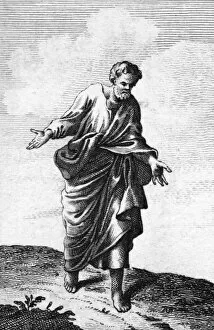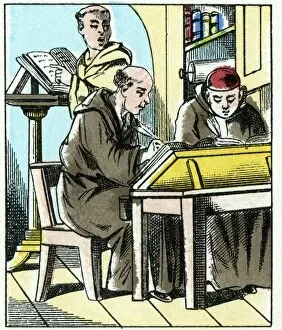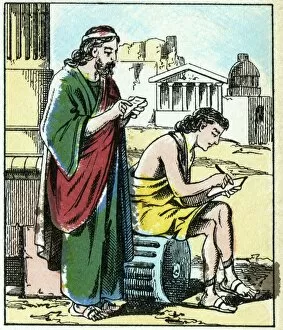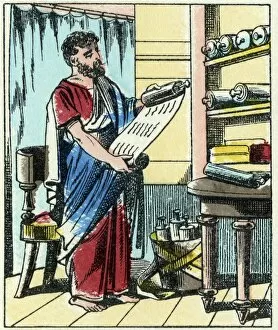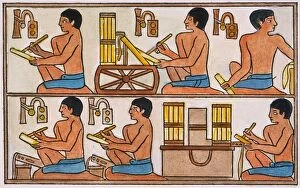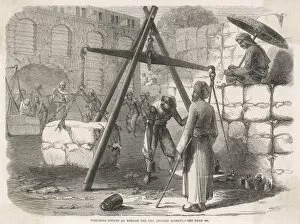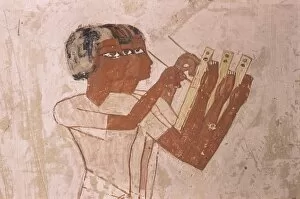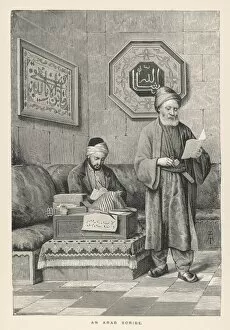Scribe Collection (#15)
The art of the scribe has transcended time and cultures, leaving behind a rich legacy of knowledge and creativity
For sale as Licensed Images
Choose your image, Select your licence and Download the media
The art of the scribe has transcended time and cultures, leaving behind a rich legacy of knowledge and creativity. From the ancient Papyrus of Ani (Book of the Dead) to the intricate illustrations in the Anglo-Saxon Chronicle, these skilled individuals played a vital role in preserving history. In medieval times, scribes meticulously copied manuscripts, ensuring that valuable texts were not lost to time. Their dedication can be seen in depictions such as The Seven Liberal Arts from Hortus deliciarum or the Folio of Codex depicting Catalan Parliament. These works showcase their attention to detail and commitment to accuracy. Scribes also held important positions within legal systems like the Court of Exchequer and Court of Common Pleas. They recorded proceedings with precision, ensuring justice was served and documented for future generations. Beyond administrative duties, scribes were often scholars themselves. In 16th-century Europe, they immersed themselves in academia, contributing to intellectual pursuits alongside renowned thinkers. Their work helped shape our understanding of various subjects throughout history. From ancient Egypt's Stela of Ani depicting a royal scribe to The Seated Scribe statue dating back thousands of years before Christ, these artifacts demonstrate how highly regarded this profession was across civilizations. Even beyond written records, scribes found inspiration in nature and poetry. A Japanese poet sitting beneath a cherry tree captures their connection with beauty and contemplation while transcribing thoughts onto paper. Throughout history, whether it be recording prophecies like Jeremiah dictating his visions or copying manuscripts by candlelight during medieval times – one thing remains constant: the indispensable role played by these dedicated individuals known as scribes.



